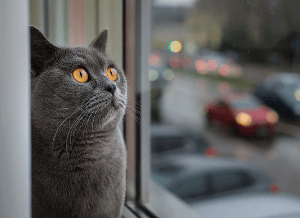Getting to grips with the quirky behaviours and personality traits of your cat can take time, especially if you’re new to cat ownership. Last week we discussed three feline personalities – the explorer, the trooper and the intruder – and explained why your cat might fall into these categories.
Today we’re looking at three more, so have a read and take a step towards better understanding your cat.
The Hunter:
Cats are predators, which is no secret. But actually, hunger has very little to do with a cat’s hunting instinct. Success is really what’s on their mind, and bringing home a token of this success, albeit a small dead furry, is the ultimate sign your cat loves and trusts you. It also shows that your cat considers the home a safe place to return to with its prize.
Hunger may increase enthusiasm for the hunt, but even a cat with a full belly will indulge in its natural hunting instinct when given half a chance. Some cats will do it more than others, which could increase their risk of ingesting worm eggs.
If your cat is a keen hunter, make sure they’re fully protected from worms with a targeted treatment like TermaWorm.
The Solo Artist:
More independent than dogs, cats need and truly value their alone time. It may be tempting to try and cajole them with cuddles and attention, but it’s important to respect their need for space by leaving them to it. When a cat wants your love and attention, you can trust that they will come and find you. 
Cats are also more susceptible to stress than dogs are and find changes to their routine or territory very threatening. In situations where the house is full of people and different noises, cats can feel very vulnerable and will need somewhere to retreat to.
You might want to try a calming product, such as a Feliway diffuser, which is simply plugged in and left to release happy pheromones to make your cat feel safe and comfortable at home.
The Cat Napper:
We mentioned in Part 1 that cats spend as much as 90% of their day asleep. They are hardcore, serial sleepers that will sleep for up to 15 hours at a time, and sometimes longer if they’ve been particularly active. Where they sleep is a source of curiosity for many, as cats will find the strangest places to get some shut-eye.
The process of selecting a bed will depend on where a cat feels safest and least vulnerable to threat. This is why they may sneak inside your wardrobe or hide under the bed. These places are warm, dark, and conceal them from the outside.
If you notice your cat changing their sleeping position regularly, it could be a sign that the area has become infested with fleas. Have a look for suspicious black specks and treat your home (and cat) thoroughly.
Next week is our final instalment of ‘Understanding your cat’s personality’ so don’t forget to keep an eye out. If you have any comments, we’d love to read them, so please comment below.
Written by: Hannah









